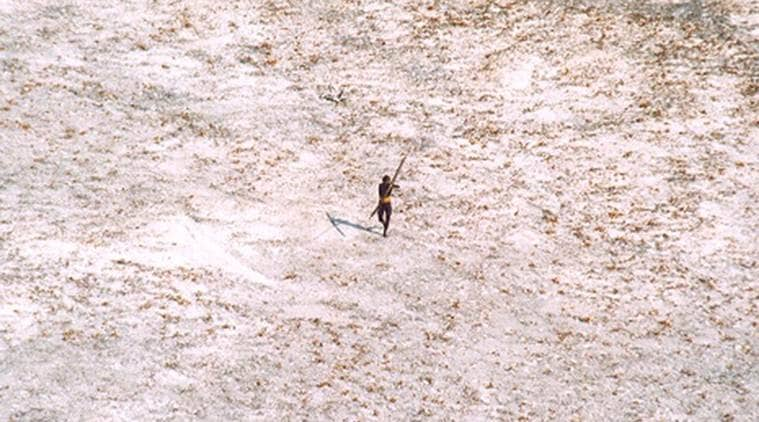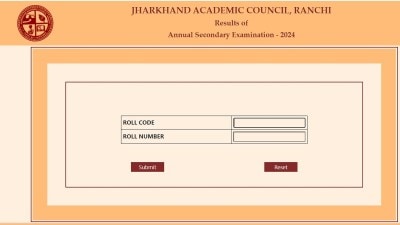- India
- International
Do not disturb this Andaman island
‘Civilisation’ has destroyed the aboriginals of Andaman & Nicobar. The death of an interloper on North Sentinel Island underlines the threat to the 55,000-yr-old sovereignty of the Islands’ last tribe standing
 North Sentinel Island (AP Photo)
North Sentinel Island (AP Photo)
After 12 years, the Sentinelese have again rejected external contact in the most emphatic way possible. In 2006, two fishermen went harvesting crabs illegally off North Sentinel Island and did not return. Last week, American John Allen Chau made a landing with the help of some local people — and is thought to be lying under the island’s sand now.
Free in spirit and faith
Chau apparently went to preach Christianity to the Sentinelese. Missionaries have been historically unwelcome in the Andamans, and the tribes of the Islands have resisted every occupation force with bows and arrows. The Great Andamanese, an alliance of ten coastal clans, fought the Battle of Aberdeen against the British in 1859, and were enslaved and eventually decimated. The seafaring Onge were forced to make room for the settlers. The forest-dwelling Jarawa fiercely resisted outsiders until the late 1990s. The reclusive Sentinelese still hold their tiny fort. All remain animistic in faith.
Missionaries had greater success on the Nicobar Islands to the south, which lie on the ancient marine trade route between Europe and the Far East. Evangelists started to approach the Nicobar tribes from the 15th century onward, and a Christian movement eventually succeeded on the Islands during the final decades of British occupation.
 North Sentinel Island is home to the pre-Neolithic Sentinelese people, seen in a picture taken by a Coast Guard helicopter. (Reuters Photo)
North Sentinel Island is home to the pre-Neolithic Sentinelese people, seen in a picture taken by a Coast Guard helicopter. (Reuters Photo)
An island of isolation
The Nicobar tribes are Mongoloid; the Andaman tribes, including the Sentinelese, are Negrito — evidence for the Homo sapiens migration from East Africa some 70,000 years ago. The Sentinelese are a pre-Neolithic people who have inhabited North Sentinel Island for an estimated 55,000 years without contact with the outside world. They are short statured, possibly due to the “island effect” that causes genetic limitation over time.

The Sentinelese and other aboriginal tribes of the archipelago are protected under The Andaman and Nicobar (Protection of Aboriginal Tribes) Regulation, 1956. Due to their isolation, it is unlikely the Sentinelese have immunity against even common diseases. A large chunk of the population of the 10 Great Andamanese tribes was wiped out after the indigenous peoples caught syphilis, measles, and influenza on an epidemic scale following contact with the early settlers. Between 1998 and 2004, when the Jarawa started to respond to the state, all government hospitals bordering their reserve opened special wards to treat them for infections.
The Sentinelese have, however, remained hostile from the time efforts began to reach out to them in 1967. The government gave up in the mid-1990s, and in order to safeguard their health and sovereignty, decided that no one could enter a 5-km buffer zone around their island, which was already out of bounds.
 Map locating North Sentinel Island (Reuters)
Map locating North Sentinel Island (Reuters)
Commerce vs caution
Under the Foreigners (Restricted Areas) Order, 1963, the Andaman & Nicobar Islands are a “Restricted Area” in which foreigners with a restricted area permit (RAP) can stay on 13 islands, and make day visits to another 11.
But in recent years, the Andaman Chamber of Commerce and Industry and the Andaman Association of Tour Operators have pressed to have the RAP restrictions relaxed. In August 2018, the Home Ministry dropped the RAP requirement for visiting 29 inhabited islands until 2022, even though “separate approvals… continue to be required for visiting Reserve Forests, Wildlife Sanctuaries and Tribal Reserves…”
Following criticism that the move compromised the safety of the tribes and ecology of the islands, the UT Administration clarified in October that Indian nationals would continue to require a pass issued by the Deputy Commissioner for entering a tribal reserve, and foreigners would need prior approval from the Principal Secretary (Tribal Welfare).
‘Tribal tourism’
North Sentinel Island, Strait Island and Little Andaman Island, home to the Sentinelese, Great Andamanese, and Onge respectively, were on the August list, as were nine Nicobar islands that are home to Particularly Vulnerable Tribal Groups (PVTGs). According to David Giles, editor of the Andaman Chronicle, the list suggested a move to facilitate “tribal tourism”.
In 2012, British publications The Guardian and the Daily Mirror reported on local touts and policemen conducting human safaris on NH 223 that cuts through the Jarawa reserve, with tourists “toss(ing) scraps of food to half-naked tribal people and order(ing) them to dance”.
When NH 223 was being built in the 1980s, the Jarawa repeatedly attacked workers. The state power-fenced the construction site, and several Jarawa were electrocuted. In 2002, the Supreme Court ordered that the road be closed, and the 2004 Jarawa Policy called for a supplementary route to reduce traffic on the Andaman Trunk Road. A sea route was to start by March 2015, but the highway remains open. In January 2014, eight Jarawa girls were abducted by settlers, and local media quoted a Jarawa youth as naming offenders who allegedly often entered the reserve to lure Jarawa women. But the tough 1956 law was not invoked.
Cost of exposure
Fewer than 50 Great Andamanese are alive today. In 2010, Boa, the last of the Bo, a Great Andamanese tribe, died — taking with her the knowledge and language of her people. A few months earlier, another ancient language, Khora, had passed with Boa’s neighbour Boro.
In December 2008, at least 15 Onge men died after drinking from a plastic container that had washed up on Dugong Creek. The Onge, who now number fewer than 100, have abandoned hunting-gathering and depend entirely on government help.
From 2004 onward, the 400-odd surviving Jarawa began to retreat into the forest, closing the window of their willing interaction with the world. But the highway continues to bring the world — and sexual exploitation, substance abuse and disease — into their shrinking sanctuary.
The Sentinelese have been the exception — protected by coral reefs that make landing on their island dangerous, and by the tribe’s unwavering hostility towards outsiders.
Only one way forward
In December 2014, the A&N administration announced a change of policy from “hands off” to “hands off but eyes on” to protect the Sentinelese. Chau’s tragedy underlines the need to re-examine security and tighten vigil around North Sentinel Island. While the “island effect” may eventually wipe out the tiny tribal populations in the archipelago, allowing their sanctuaries to be invaded by outsiders will only hasten that process. As President Pranab Mukherjee said in 2014, it is the job of the Indian state “to protect them in their own environment and in their own circumstances”.
More Explained
EXPRESS OPINION
Apr 19: Latest News
- 01
- 02
- 03
- 04
- 05









































